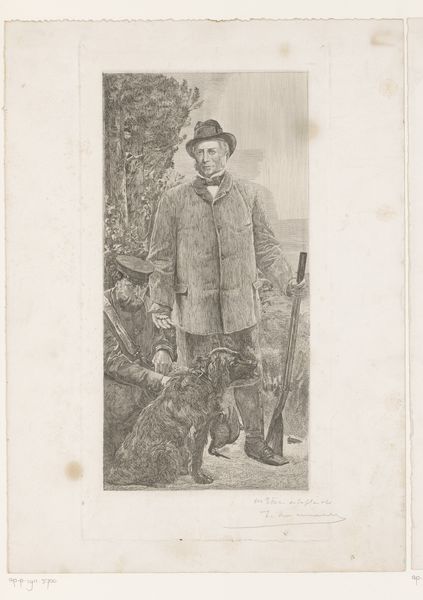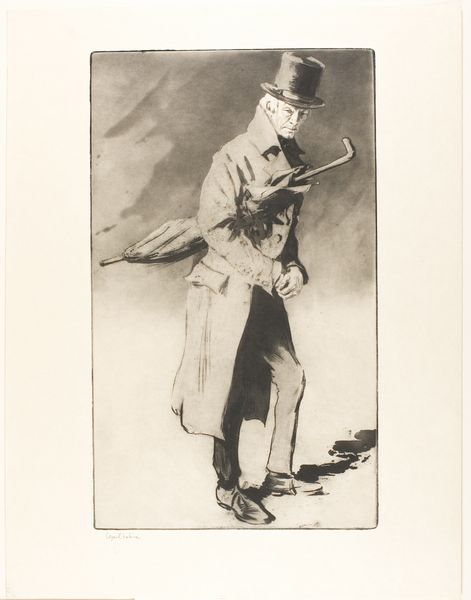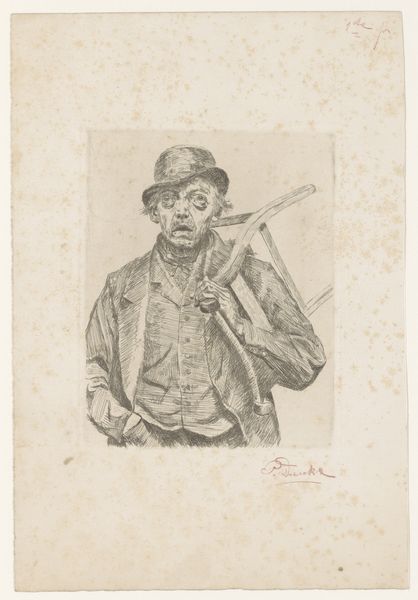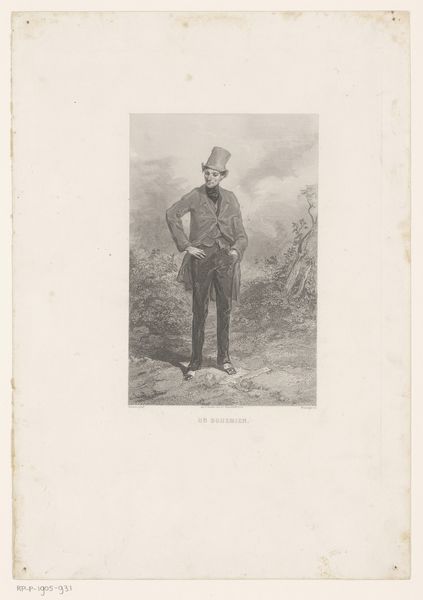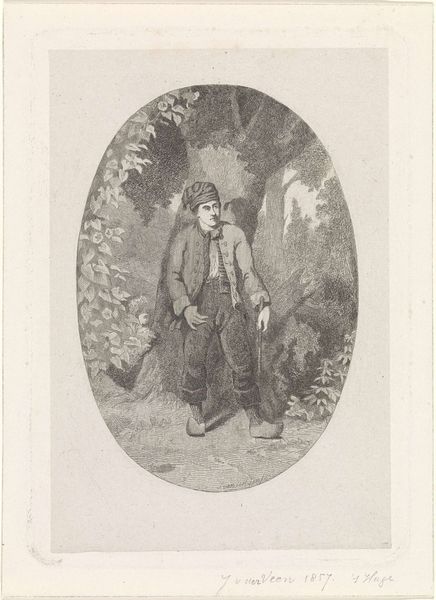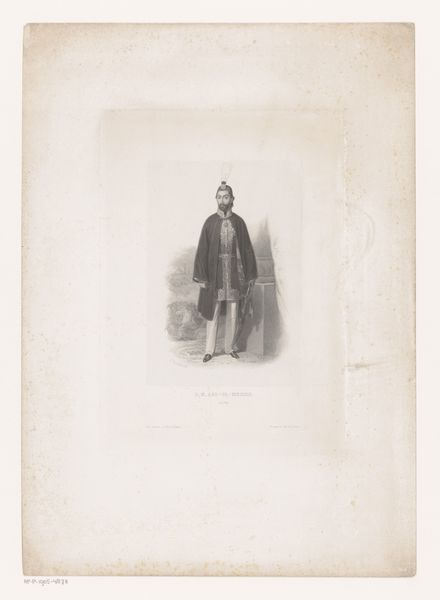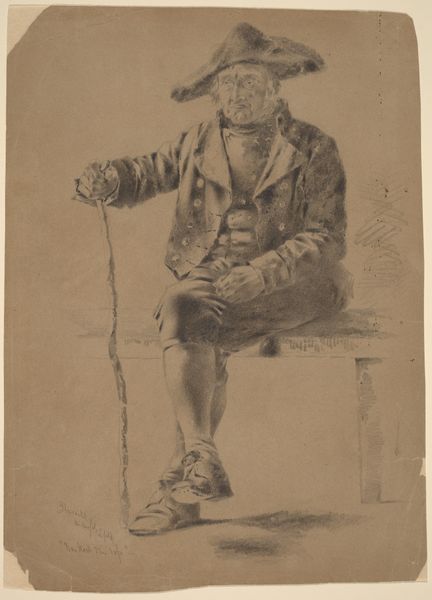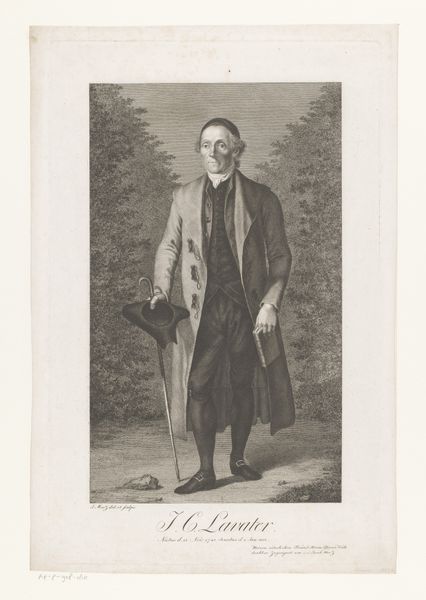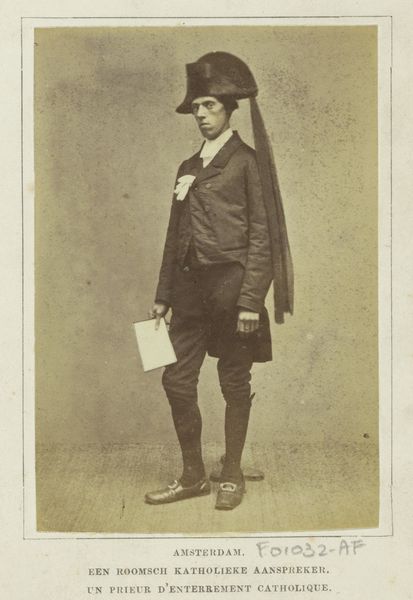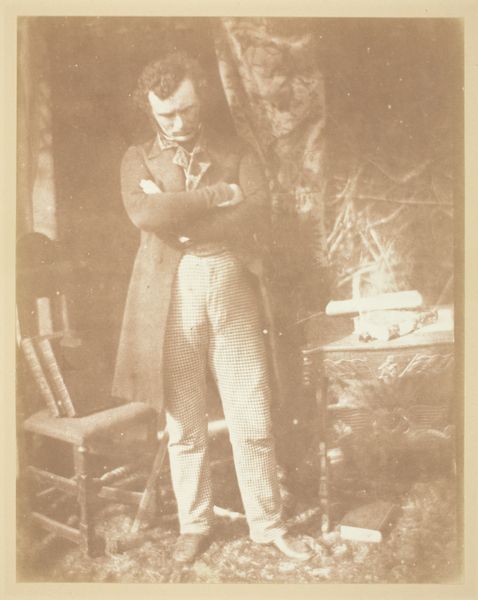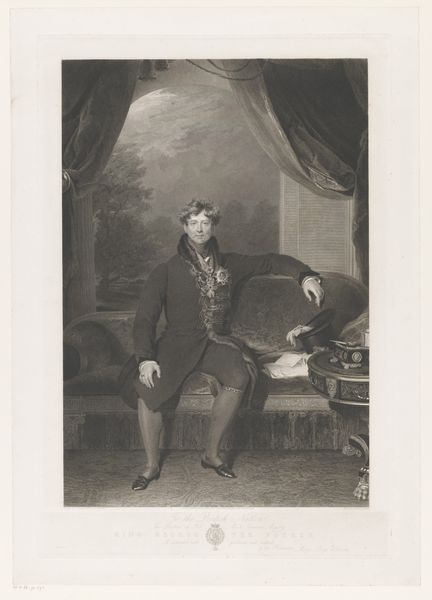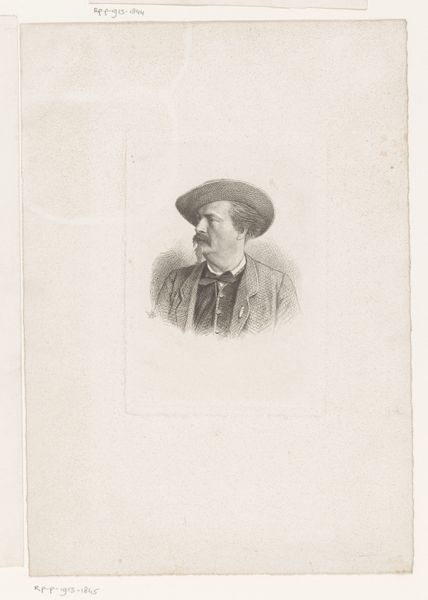
Onbekende man met jachtgeweer, mogelijk Max van den Berge, aan zijn zijde een knielende tweede man en jachthond 1864 - 1911
0:00
0:00
print, engraving
#
portrait
# print
#
genre-painting
#
engraving
Dimensions: height 347 mm, width 173 mm
Copyright: Rijks Museum: Open Domain
Editor: This engraving from between 1864 and 1911, titled "Unknown Man with a Hunting Rifle," features a man, possibly Max van den Berge, a kneeling figure, and a hunting dog. It’s fascinating how a hunting scene becomes a portrait. What strikes you most about the piece? Curator: It’s interesting that you picked up on the duality of the subject matter, particularly with genre-painting conventions meeting the personalized portrait. I find it evocative of a particular era when notions of masculinity and land ownership were tightly intertwined. This image performs social work; the confident stance of the man with the rifle and the submissive posture of the other figure reflect hierarchical structures prevalent at the time, but in an art historical lens, the political nature in art becomes a document. Doesn't this contrast evoke questions of power? Editor: Definitely. It’s unsettling to consider how power dynamics are subtly portrayed. But why depict hunting in this manner? Is it glorifying the act? Curator: Think about the function of imagery at that time. Hunting wasn't just a sport; it symbolized dominance and control over nature, a privilege often associated with wealth and social status. This print, readily reproducible, circulated those ideologies and thus normalizes such practices and political messaging. Editor: That makes sense. So the image isn't just about hunting; it's a carefully constructed narrative about social standing. Curator: Precisely. The institutional support, like prints sold, and public role that images like these served, cemented those hierarchies. This challenges us to critically examine the power structures embedded within seemingly simple genre scenes. Editor: This piece gives me a lot to think about regarding how we interpret art through a social lens. It's far more complex than I initially imagined. Curator: Indeed. The layers of meaning woven into art often reflect the intricate tapestry of the societies from which they emerge, offering us a richer understanding of our history and ourselves.
Comments
No comments
Be the first to comment and join the conversation on the ultimate creative platform.
